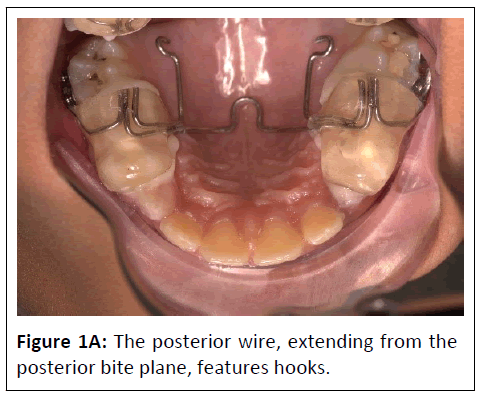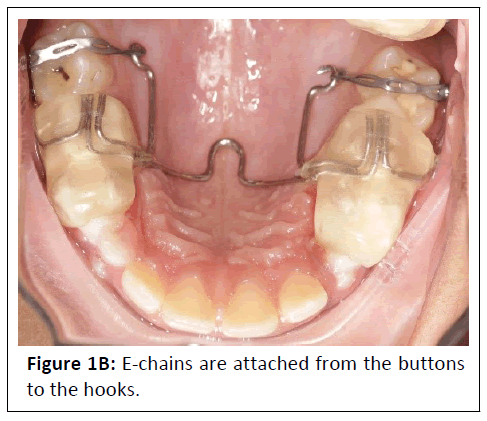A Novel Method to Correct Scissor Bite
Supriya Gopalakrishnan*, Tojan Chacko, Jose Jacob
Department of Orthodontics, Sree Anjaneya Institute of Dental Sciences, Calicut, India
Published Date: 2024-04-16DOI10.36648/2348-1927.10.1.103
Supriya Gopalakrishnan*, Tojan Chacko, Jose Jacob
Department of Orthodontics, Sree Anjaneya Institute of Dental Sciences, Calicut, India
- *Corresponding Author:
- Supriya Gopalakrishnan
Department of Orthodontics,
Sree Anjaneya Institute of Dental Sciences, Calicut,
India,
E-mail: supriyagirish31@gmail.com
Received date: March 15, 2024, Manuscript No. IPJOE-24-18733; Editor assigned date: March 18, 2024, PreQC No. IPJOE-24-18733 (PQ); Reviewed date: April 01, 2024, QC No. IPJOE-24-18733; Revised date: April 08, 2024, Manuscript No. IPJOE-24-18733 (R); Published date: April 16, 2024, DOI: 10.36648/2469-2980.10.1.103
Citation: Gopalakrishnan S, Chacko T, Jacob J (2024) A Novel Method to Correct Scissor Bite. J Orthod Endod Vol.10 No.1: 103.
Introduction
The prevalence of scissor bite tendency is increasing due to evolutionary factors. Treating scissor bite can be a complex process, often requiring the opening of the bite and significant tooth movement in the transverse dimension [1]. It is also frequently associated with molar extrusion. In this article, the authors propose a straightforward technique to effectively correct unilateral or bilateral scissor bite.
Materials and Methods
In this technique, an upper posterior bite plane is constructed on each side, covering all the posterior teeth that are in their normal alignment (Figure 1A). These two posterior bite planes are connected using a wire with a U-bend in the middle. The posterior wire, extending from the posterior bite plane, features hooks. It is recommended to use a thicker gauge wire, preferably 19-gauge stainless steel, to ensure resistance to deflection. The number and placement of the hooks will depend on the specific molars that are displaced in the scissor bite. Buttons are attached to the buccal surface of the molars. In cases where the displacement is severe, it is advisable to attach at least two buttons to enhance control [2].
E-chains are attached from the buttons to the hooks, as illustrated in Figure 1B. These e-chains run through the occlusal surface of the molars, effectively limiting the tendency for extrusion. It is important to note that the e-chains should be changed changed at regular intervals, typically every 4 weeks, to ensure optimal effectiveness.
Discussion
Scissor bite can manifest as unilateral or bilateral, although unilateral cases are more common. It can affect a single tooth or multiple teeth and is often associated with crowding in the posterior region. It is often accompanied by collapsed arch. The misaligned bite can have implications for growth, development, and masticatory muscle function, potentially leading to Temporomandibular Joint (TMJ) issues. Sound diagnosis and biomechanics are having paramount importance in the efficiency of molar scissors-bite correction.
Traditional treatment approaches for scissor bite correction typically involve the use of scissor bite elastics (intermaxillary elastics). However, these elastics can have biomechanical side effects, such as vertical molar eruption, clockwise mandibular rotation and bite opening. These effects can be problematic, particularly for individuals with a vertical growth pattern.
In this method, intermaxillary elastics are eliminated. Therefore, it can be considered a prudent approach for correcting scissor bite in vertically growing individuals. Another popular technique of correcting scissor bite in vertically growing individuals is use the leverage of micro implants [3,4]. But use of micro-implants warrants additional cost and it turns the treatment into an invasive one. Any invasive procedure has its inherent side effects [5].
Advantages
Posterior extrusion is minimized in this method since there is no vertical force component involved. Patient compliance is not a determining factor as the use of elastics is eliminated. In cases of complete scissor bite, where the palatal cusps of maxillary molars are completely outside in relation to the buccal cusps of mandibular molars, bite opening becomes necessary. Fortunately, this technique requires no significant additional inventory. While palatal Temporary Anchorage Devices (TADs) can achieve similar results, this technique is both cost-effective and non-invasive.
Conclusion
This article demonstrates satisfactory correction of scissor bite with minimal patient cooperation and reasonable vertical control. This noninvasive method can be used in unilateral or bilateral scissor bite.
References
- Lee SA, Chang CCH, Roberts WE (2018) Severe unilateral scissors-bite with a constricted mandibular arch: Bite turbos and extra-alveolar bone screws in the infrazygomatic crests and mandibular buccal shelf. Am J Orthod Dentofacial Orthop 154: 554-569.
[Crossref] [Google Scholar] [Indexed]
- Kucher G, Weiland FJ (1996) Goal-oriented positioning of upper second molars using the palatal intrusion technique. Am J Orthod Dentofacial Orthop 110: 466-468.
[Crossref] [Google Scholar] [Indexed]
- Kalia A, Sharif K (2012) Scissor-bite correction using miniscrew anchorage. J Clin Orthod 46:573-579.
- Pattanaik S, Sahu SK, Nanda SB, Nayak TK, Mishra S, et al. (2017) Mini implants in orthodontics. J Contemp Orthod 1:36-40.
- Papageorgiou SN, Zogakis IP, Papadopoulos MA (2012) Failure rates and associated risk factors of orthodontic miniscrew implants: A meta-analysis. Am J Orthod Dentofacial Orthop 142:577-595.
[Crossref] [Google Scholar] [Indexed]
Open Access Journals
- Aquaculture & Veterinary Science
- Chemistry & Chemical Sciences
- Clinical Sciences
- Engineering
- General Science
- Genetics & Molecular Biology
- Health Care & Nursing
- Immunology & Microbiology
- Materials Science
- Mathematics & Physics
- Medical Sciences
- Neurology & Psychiatry
- Oncology & Cancer Science
- Pharmaceutical Sciences


